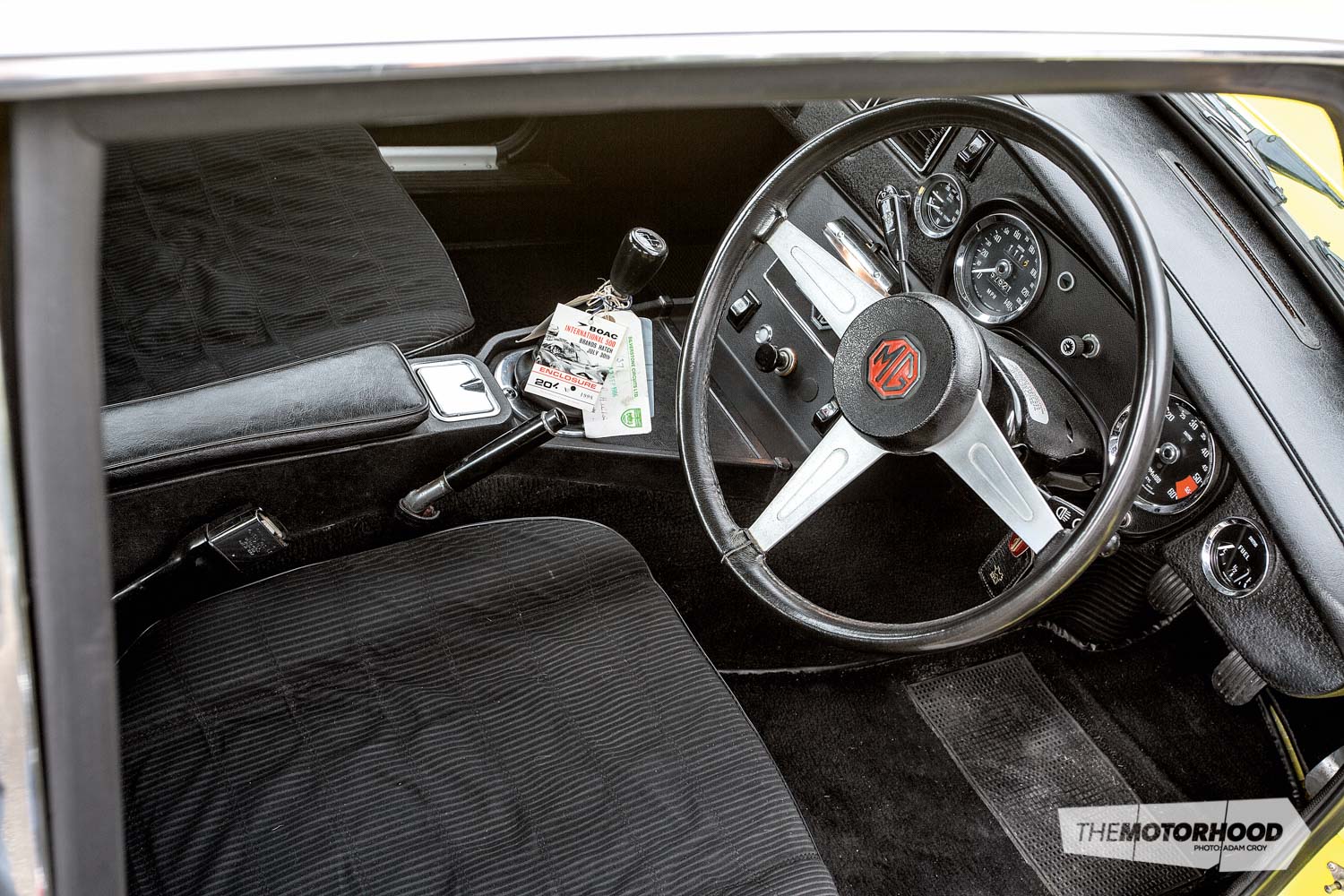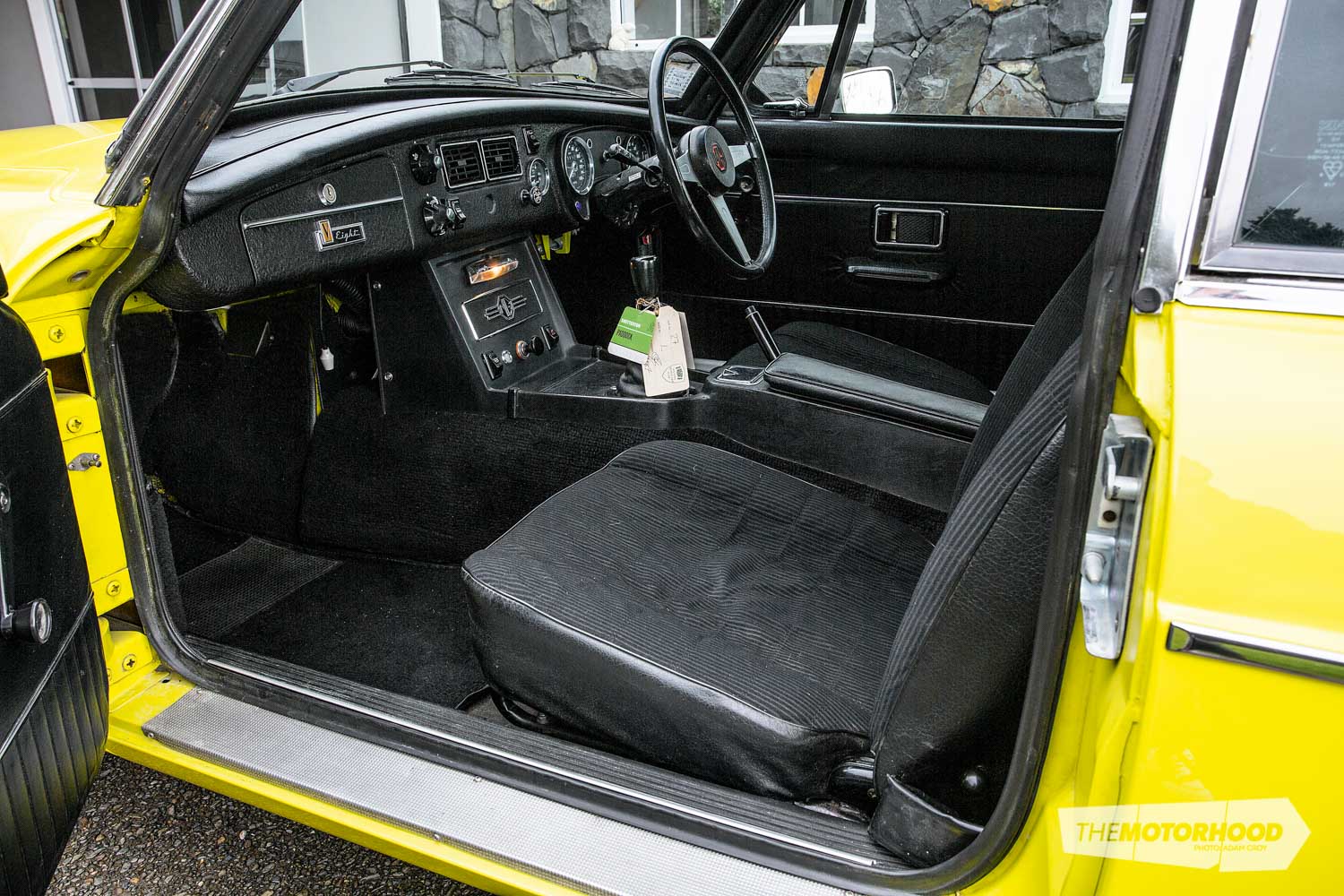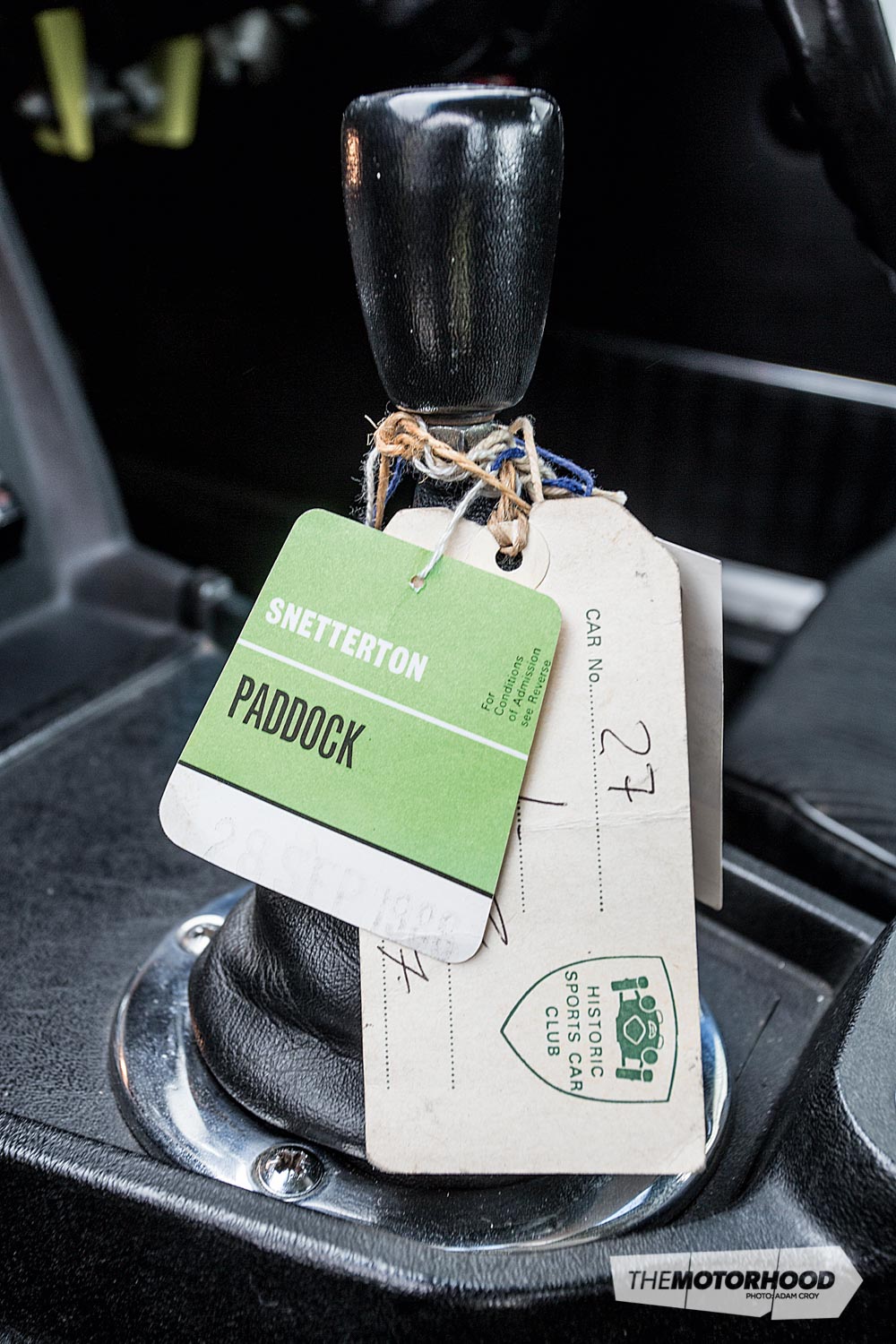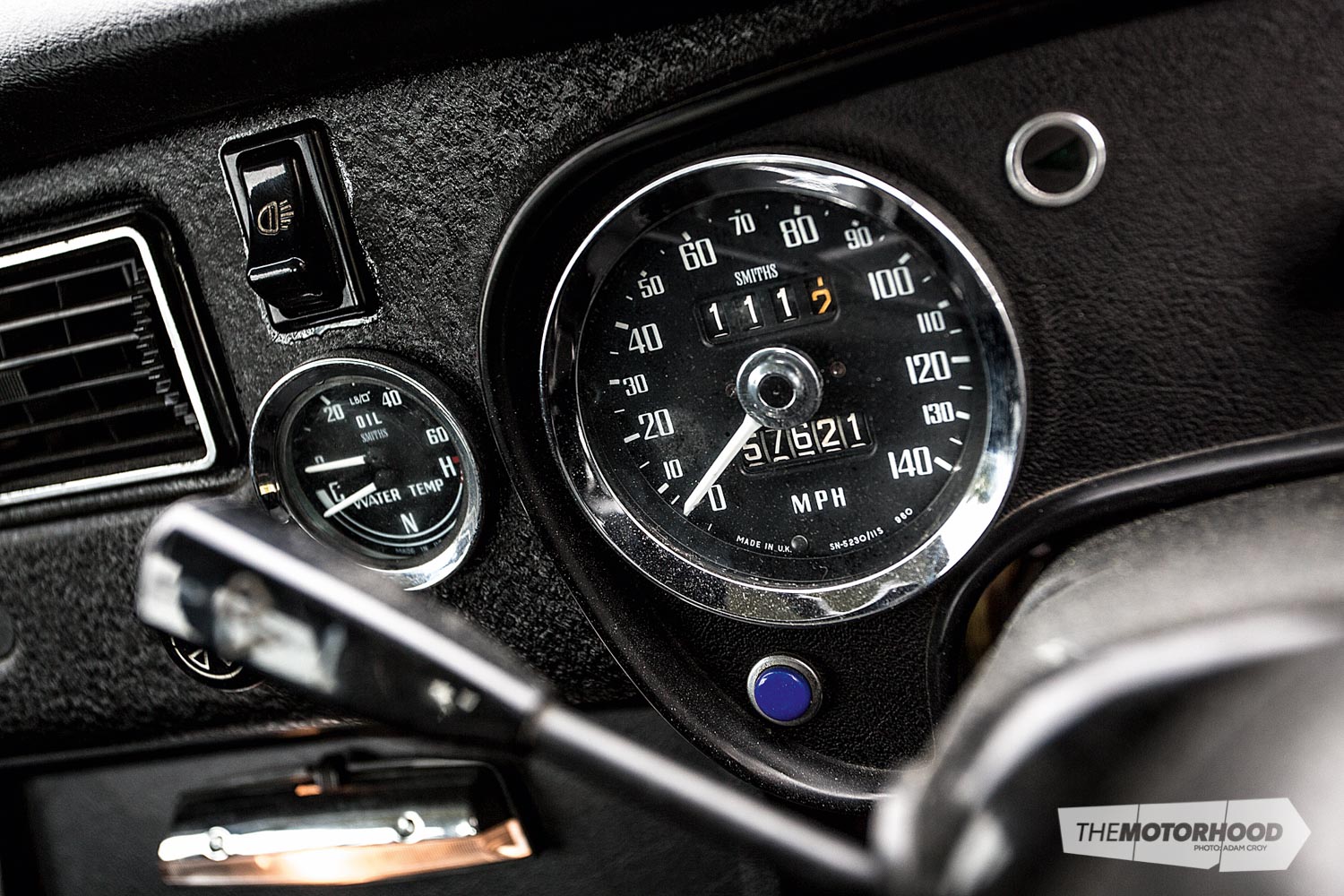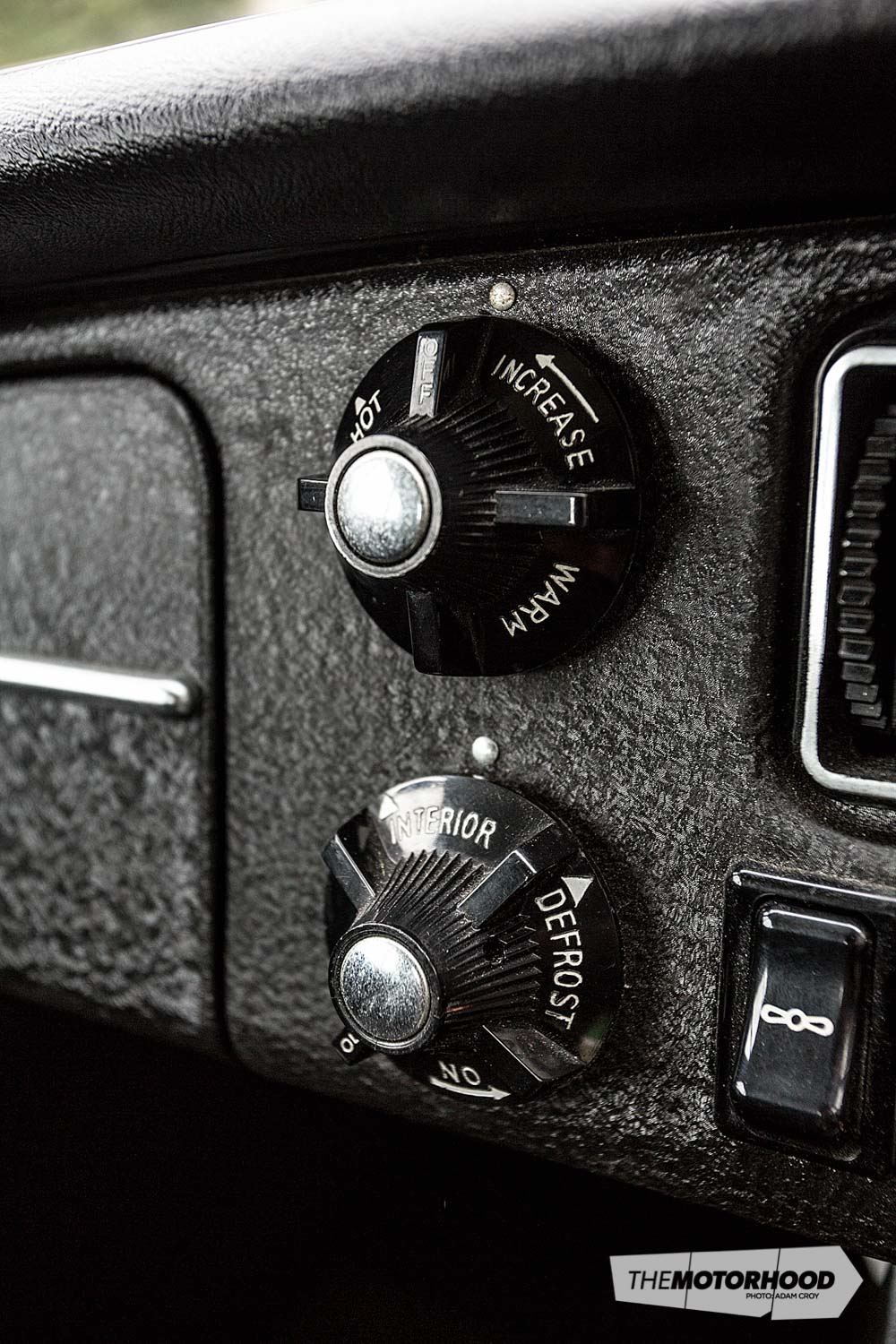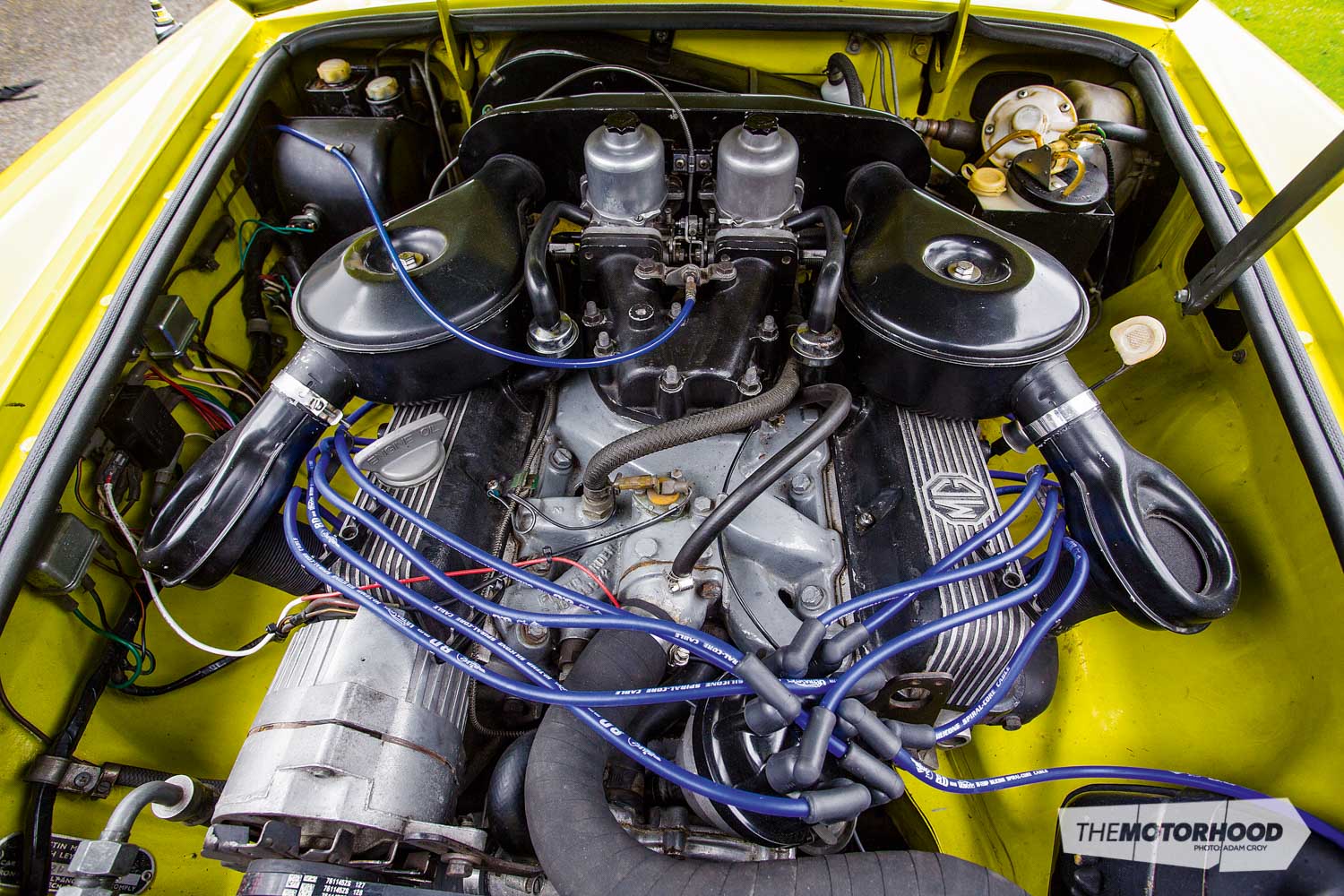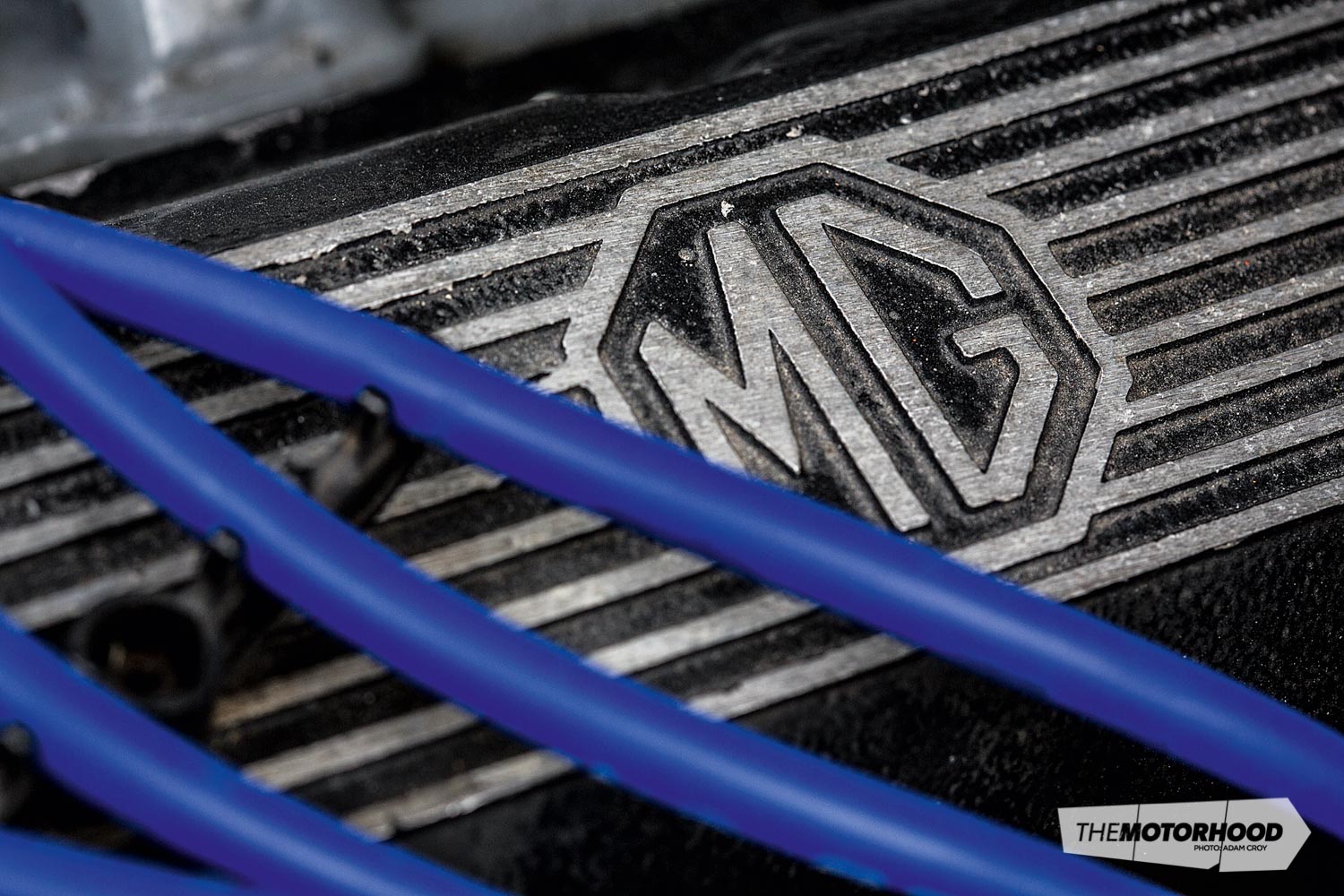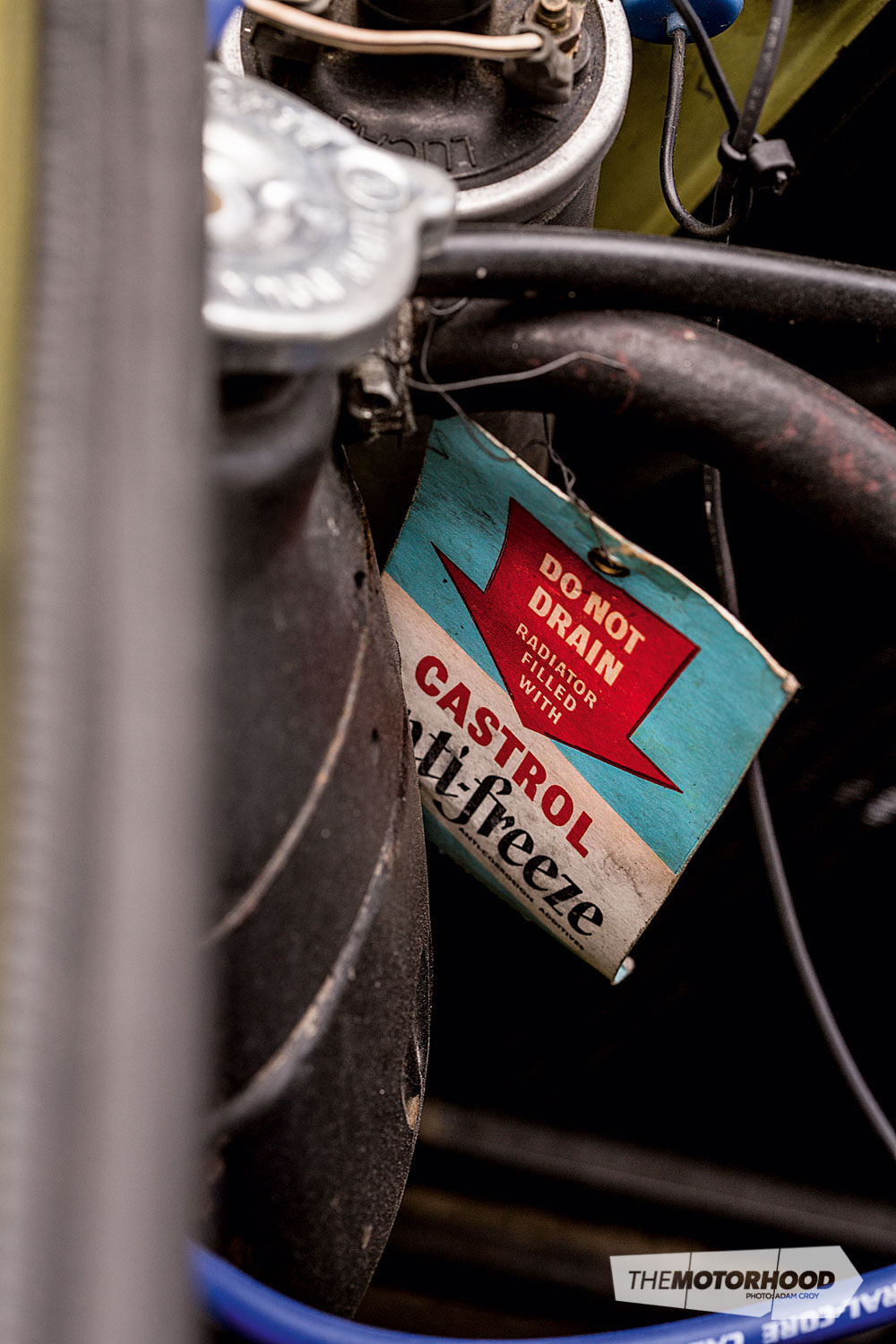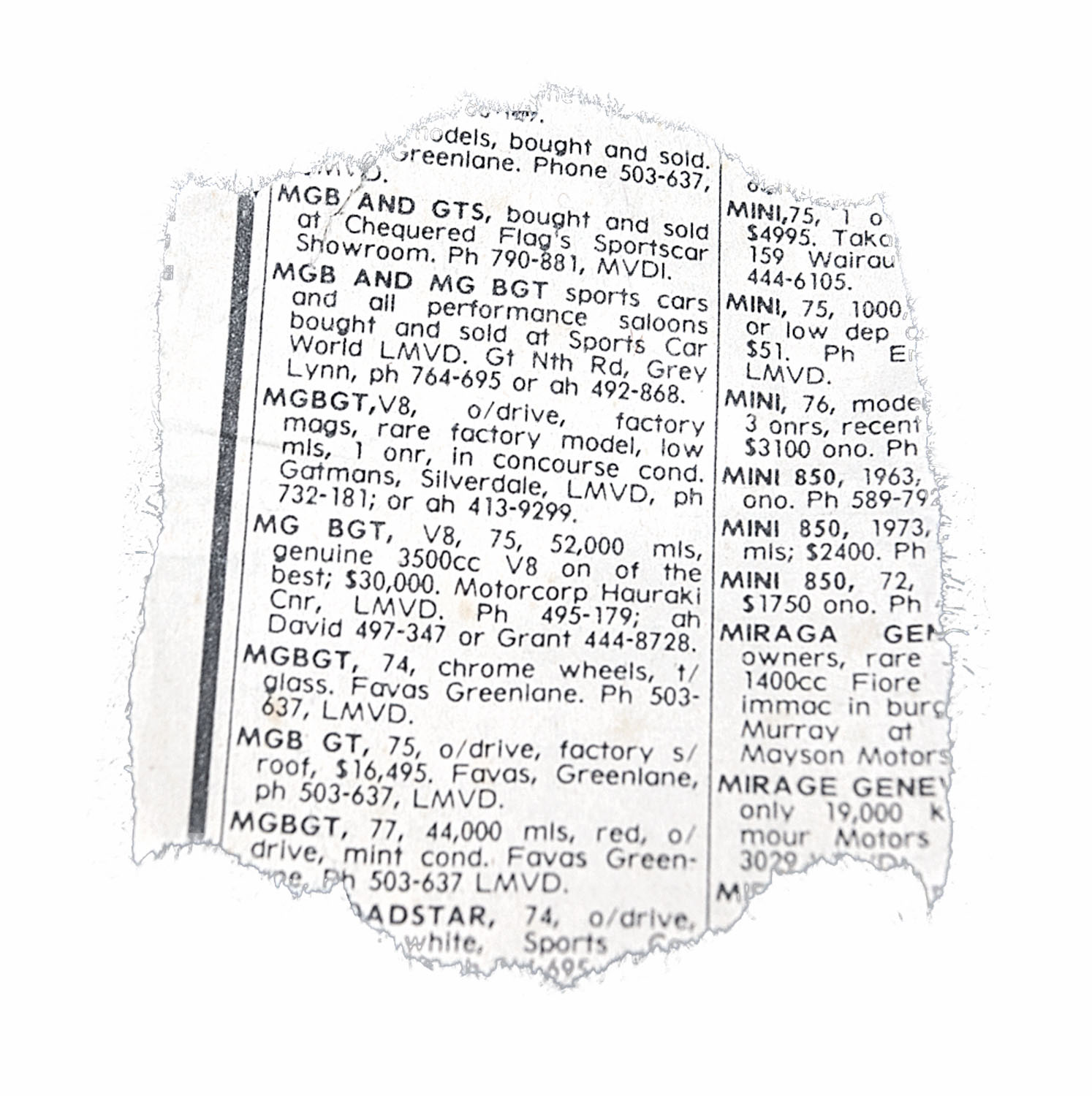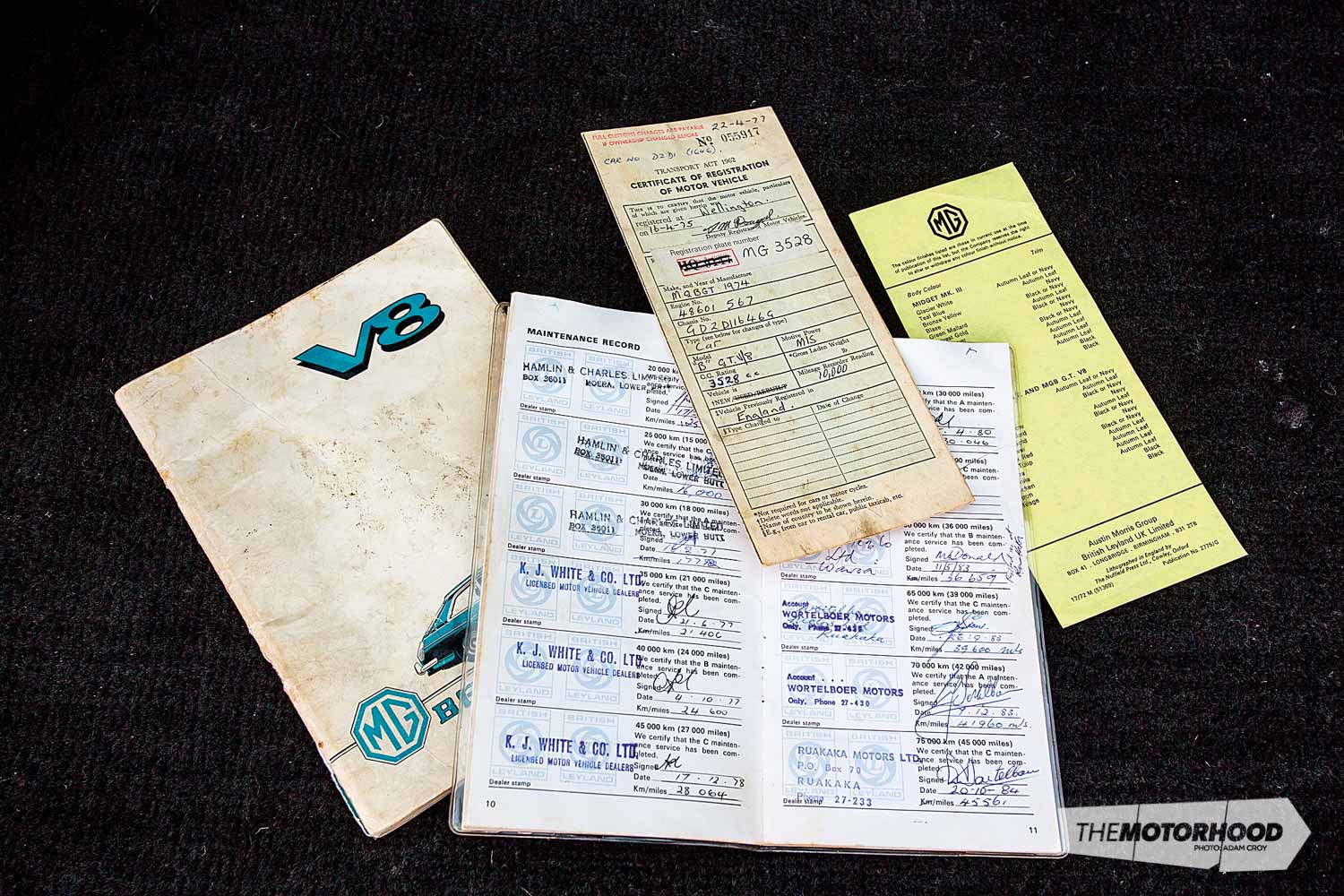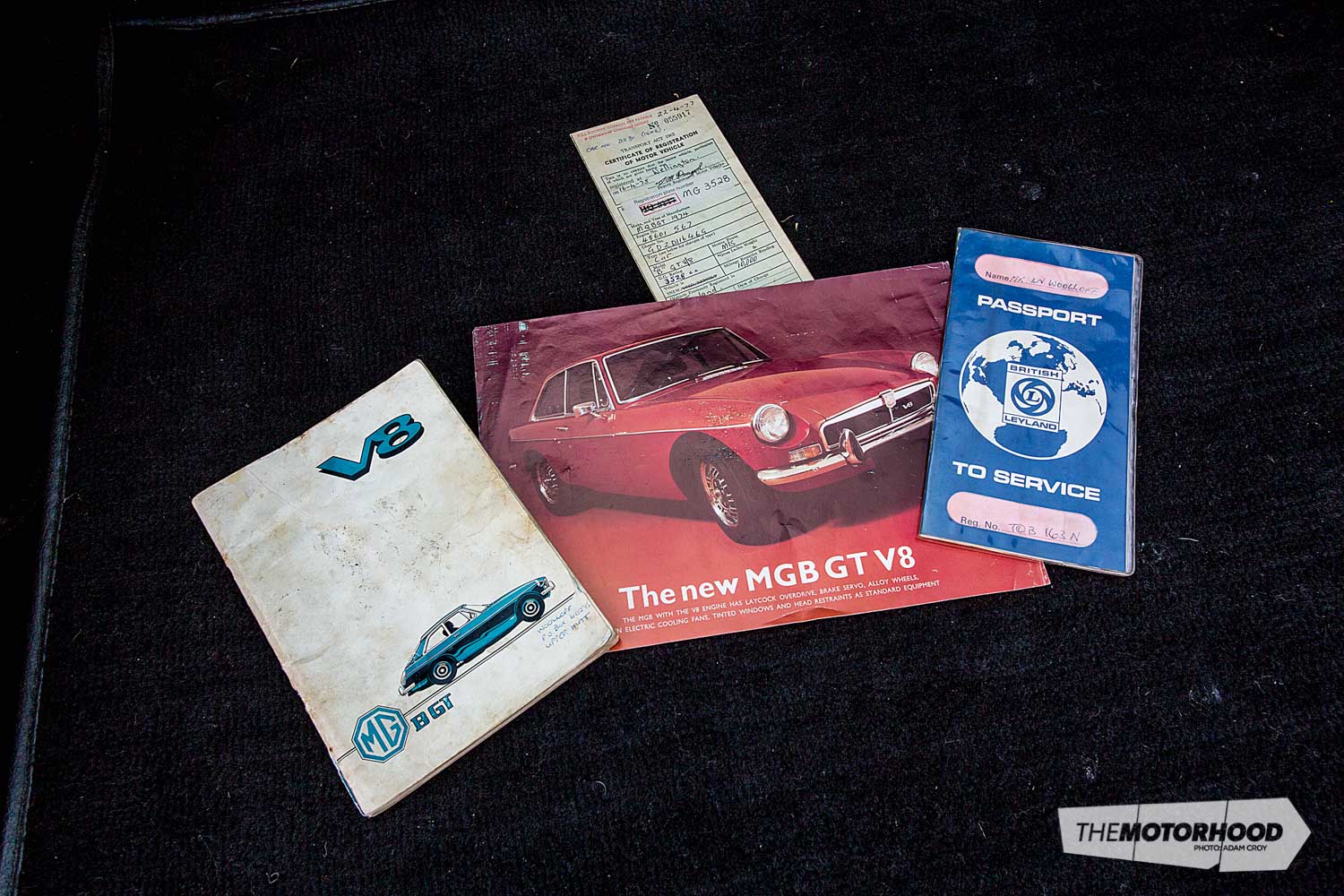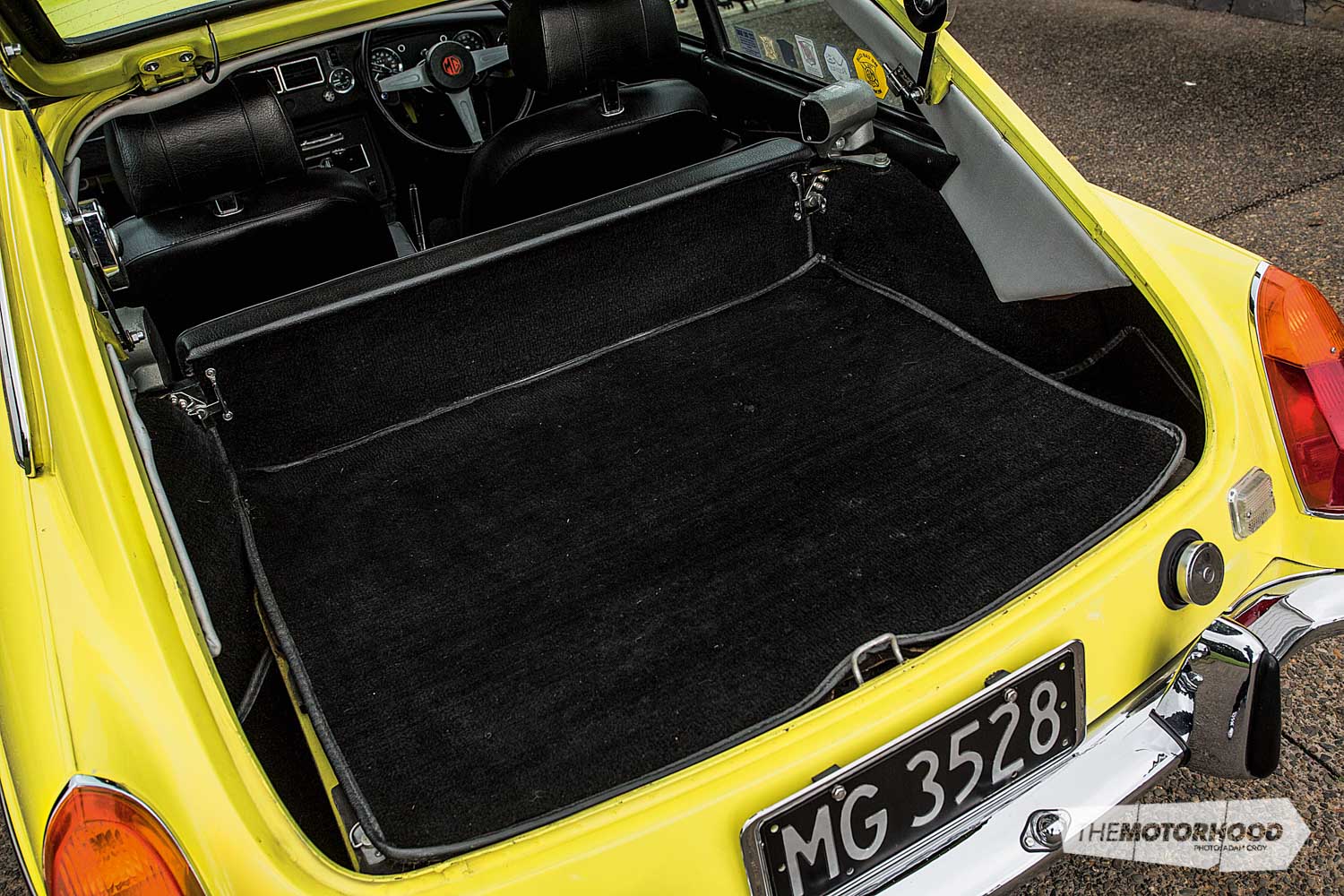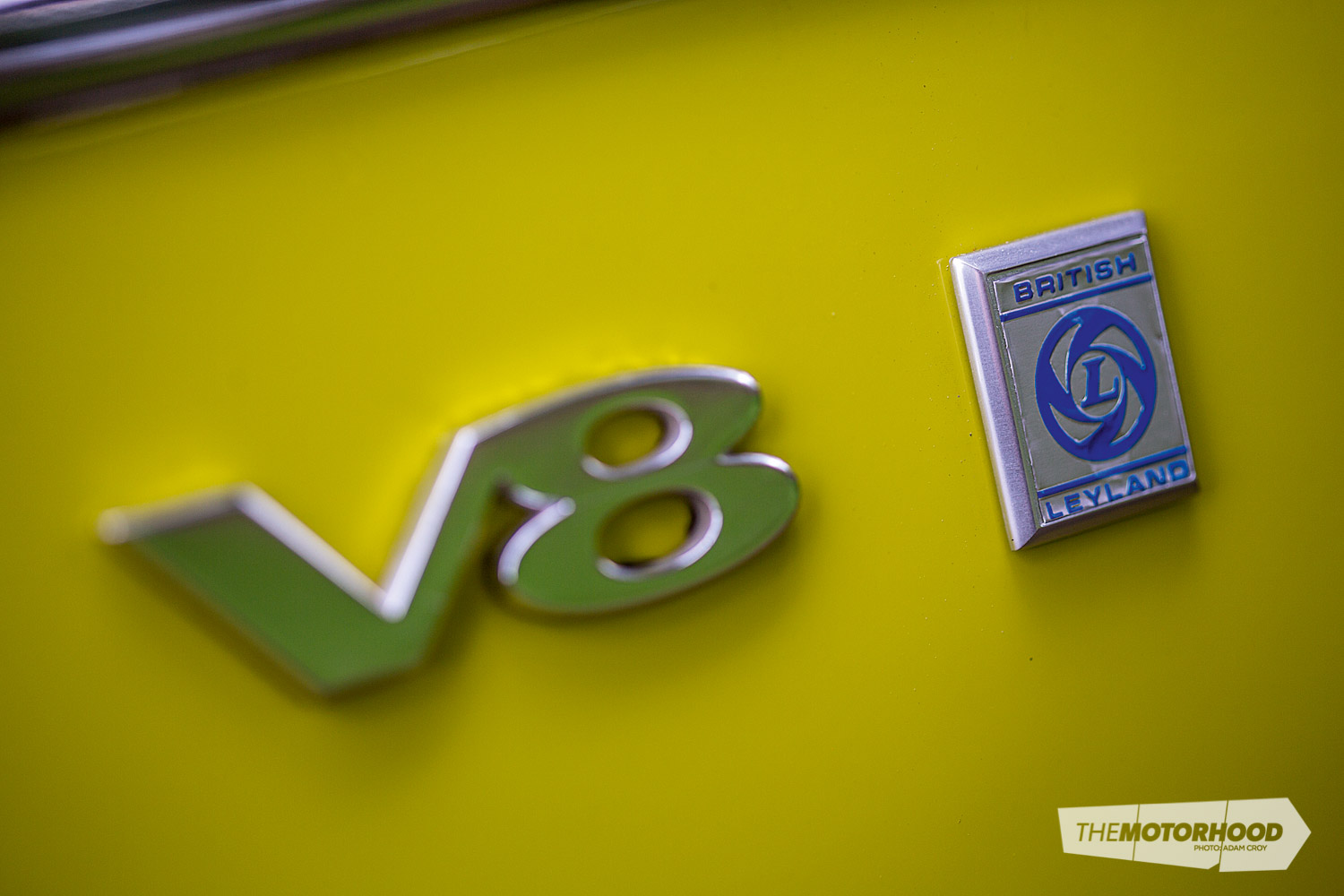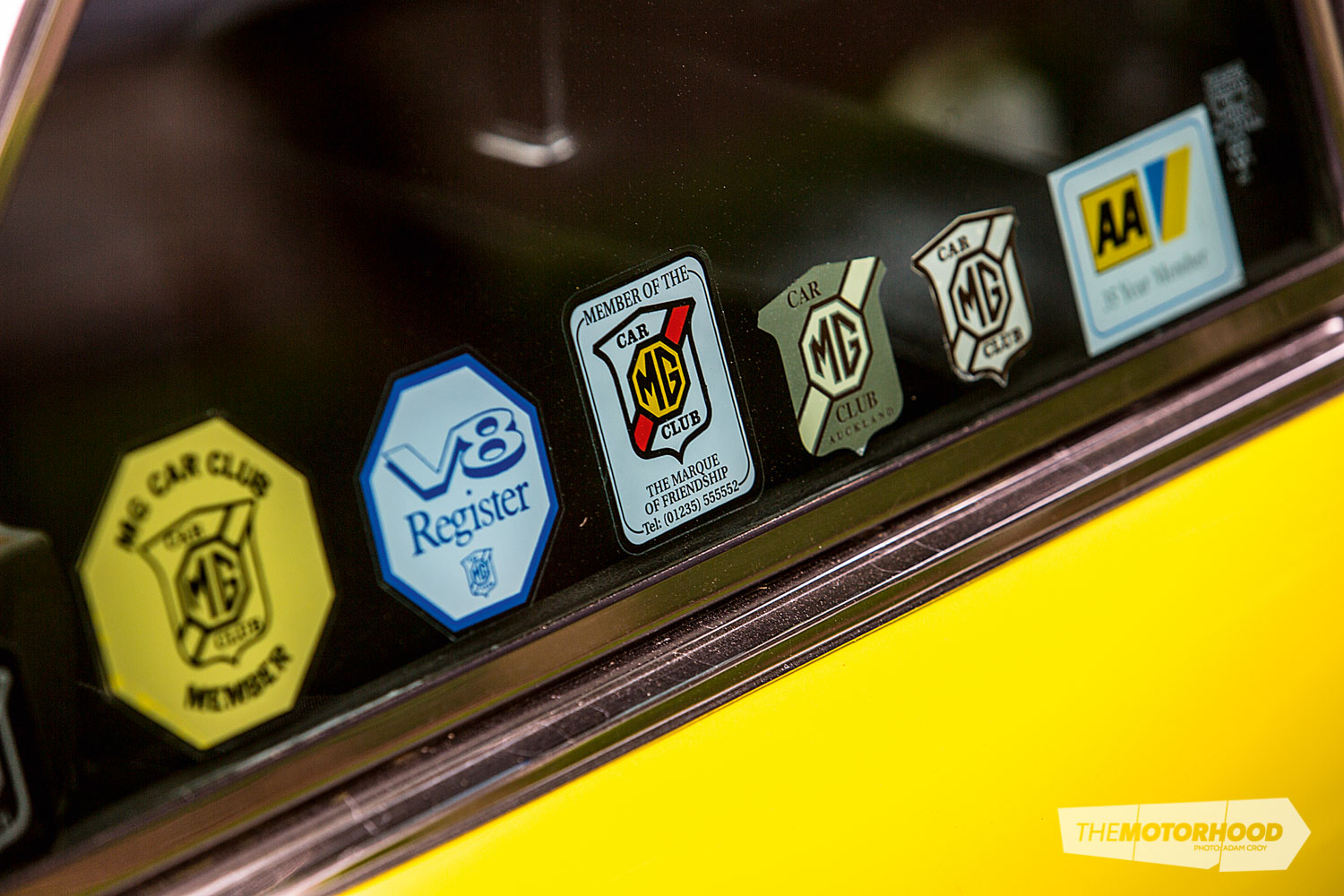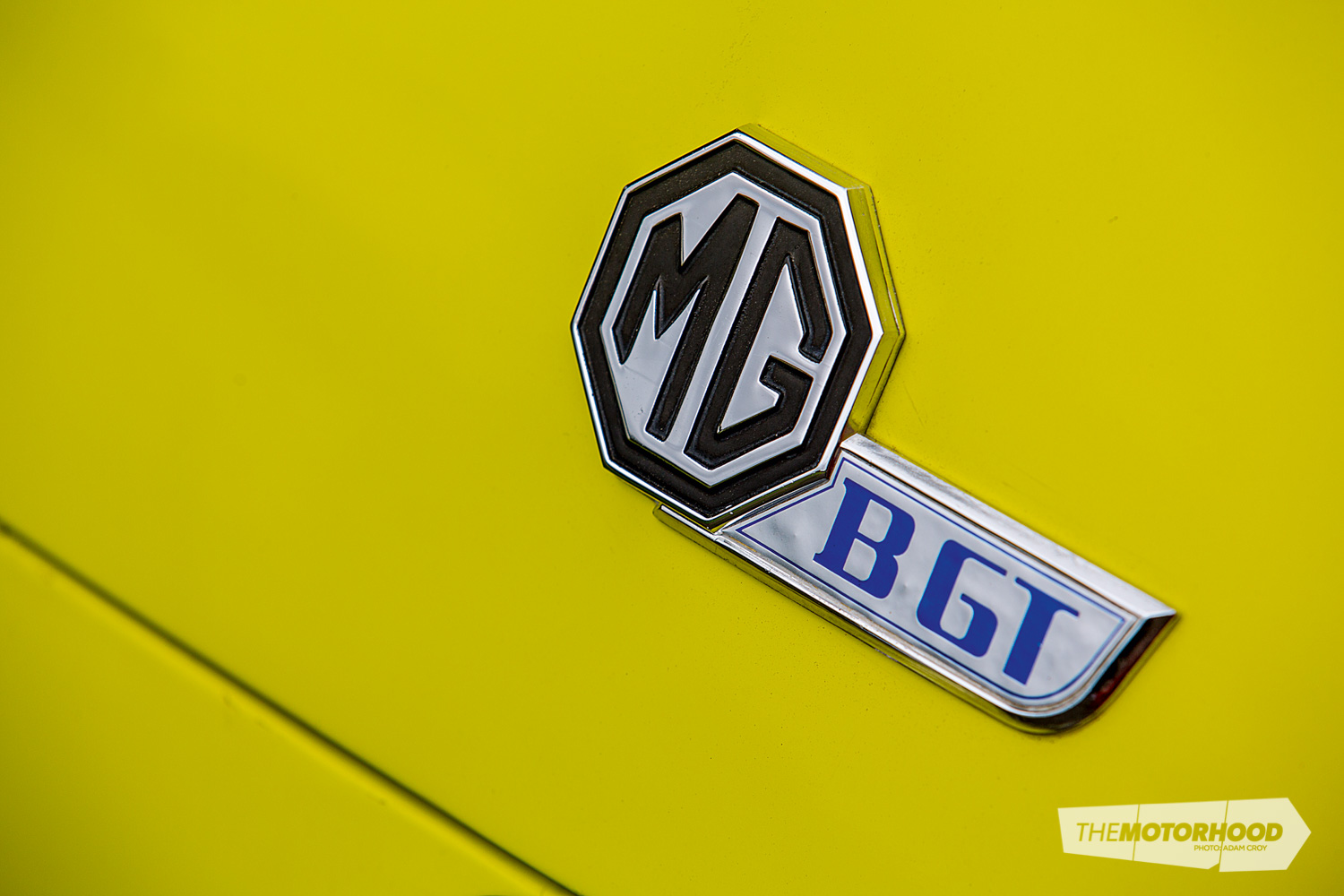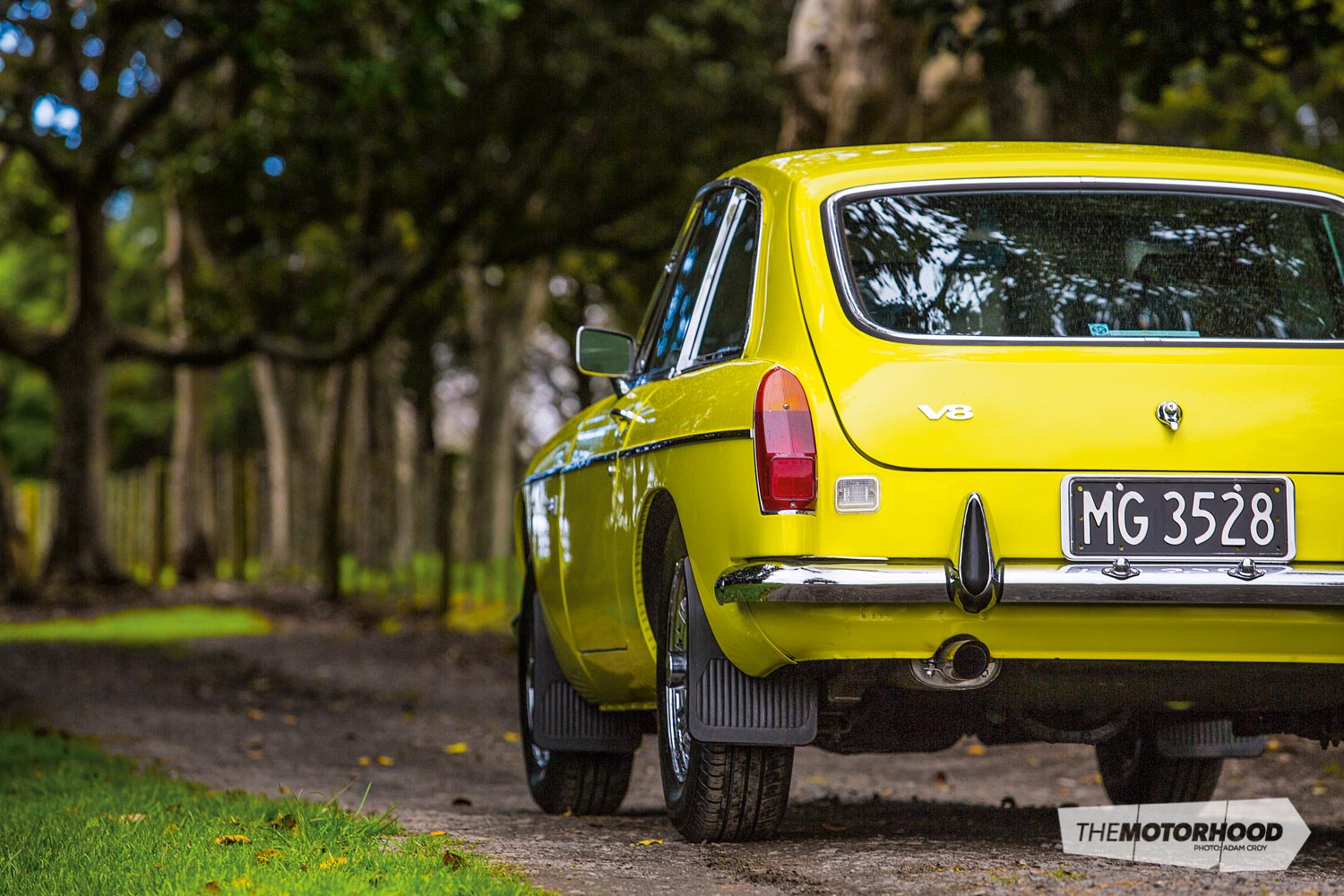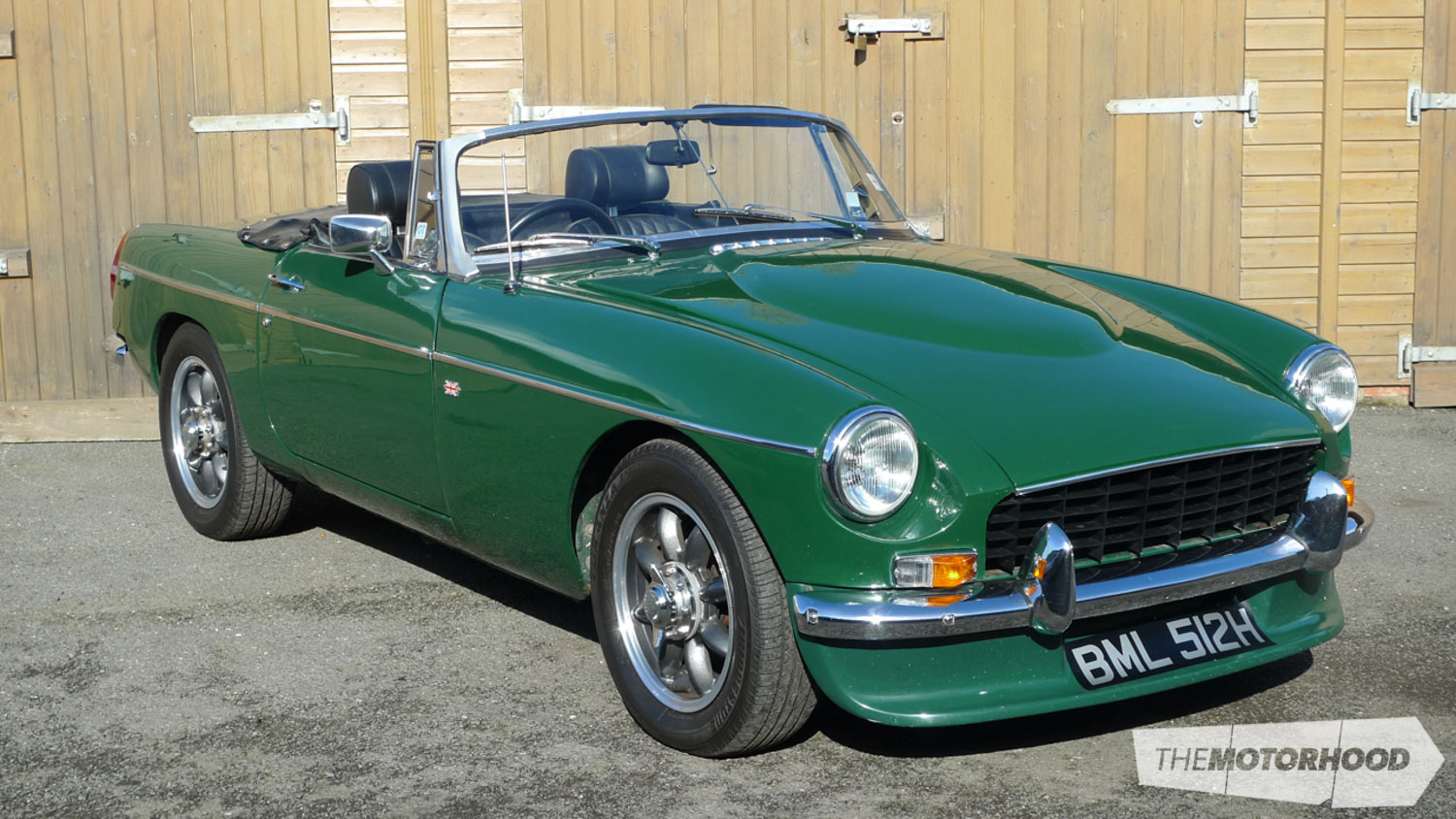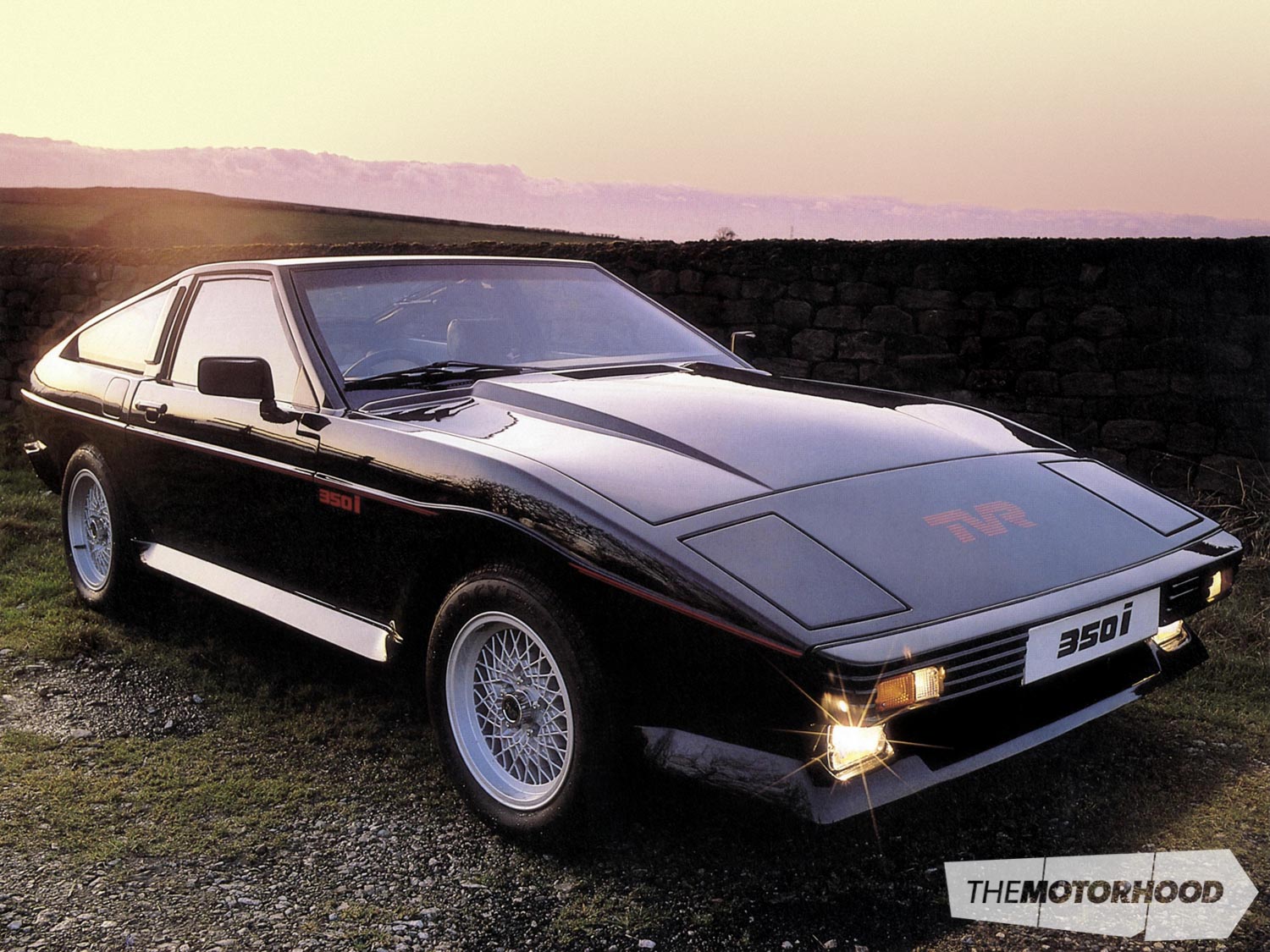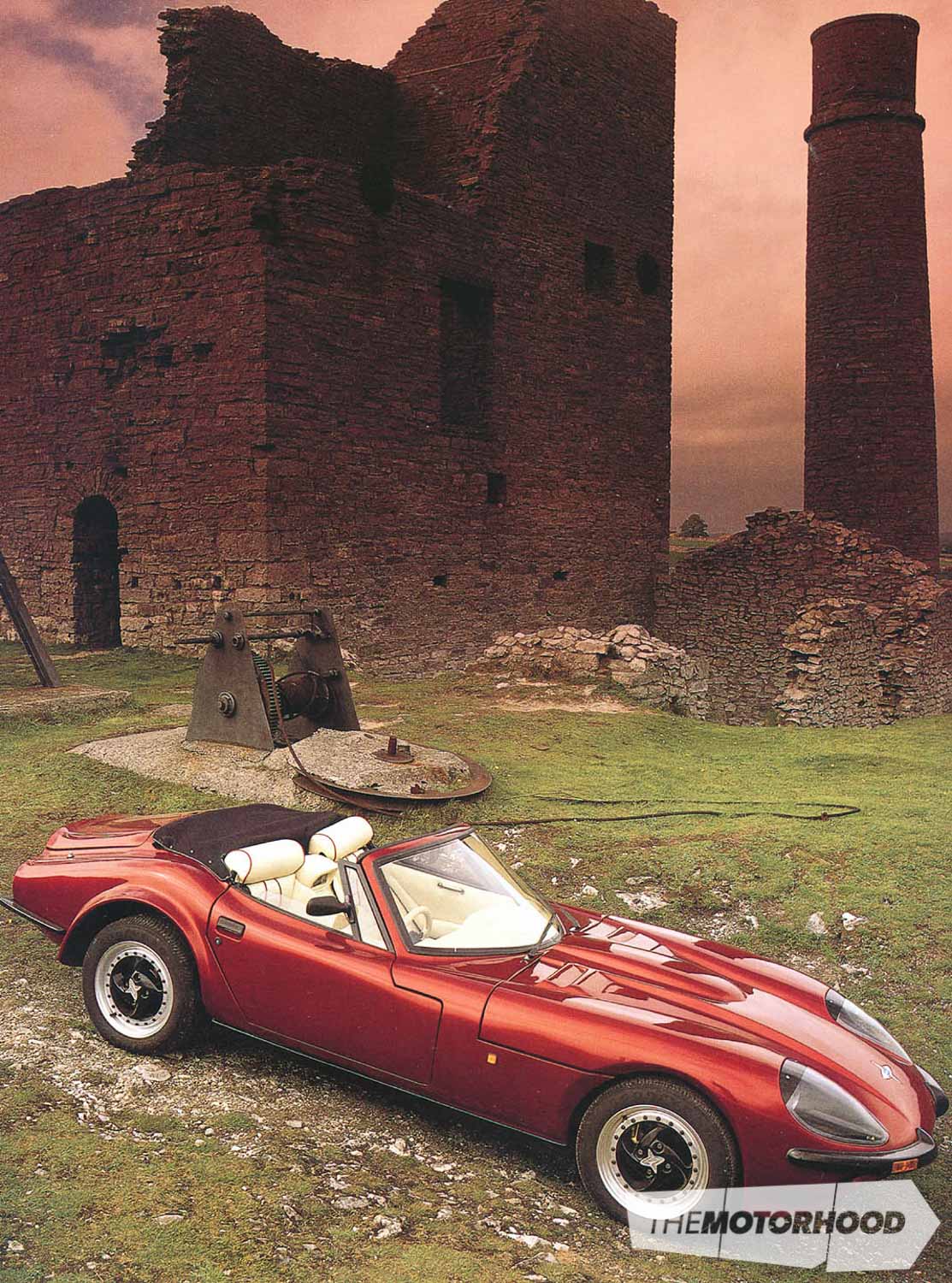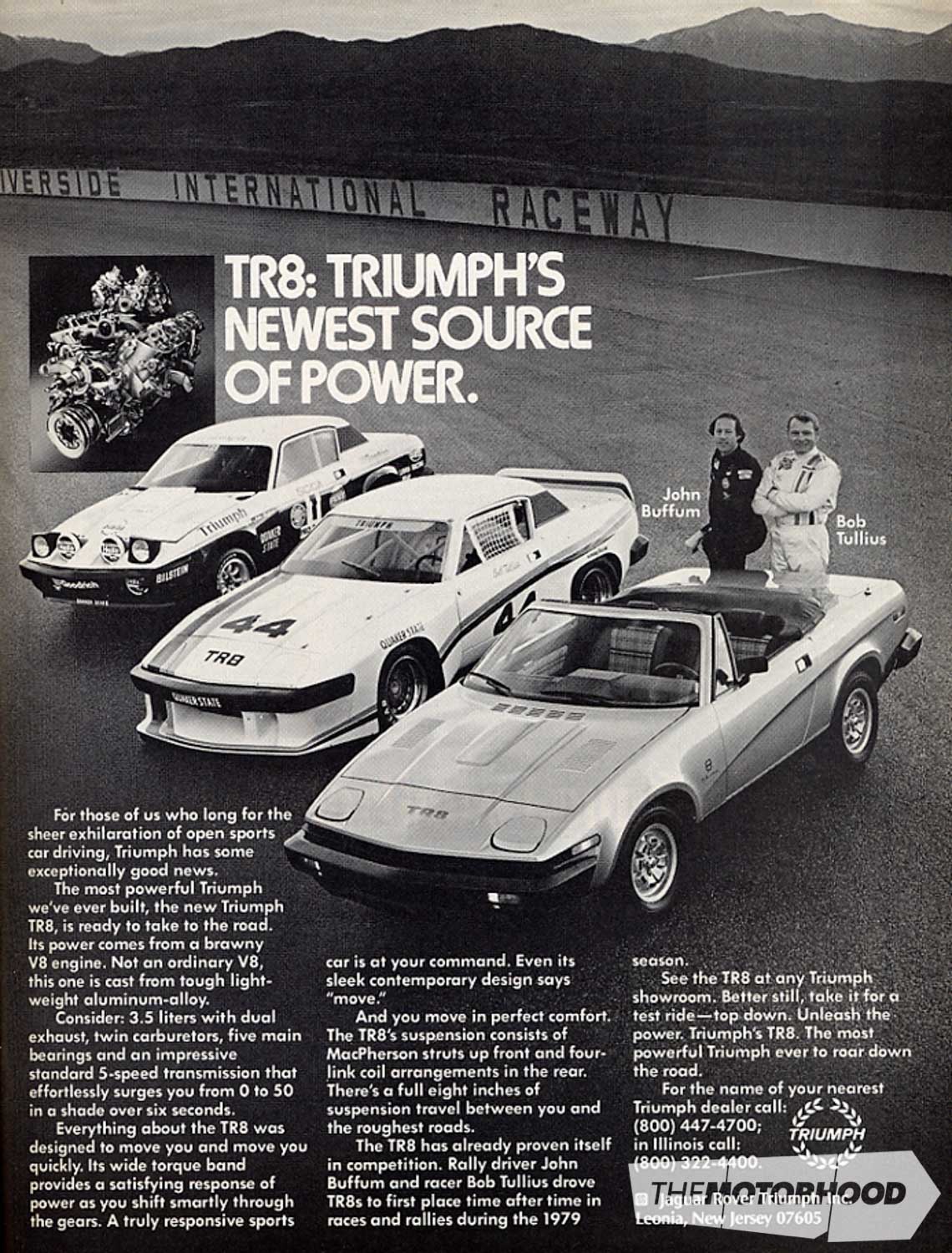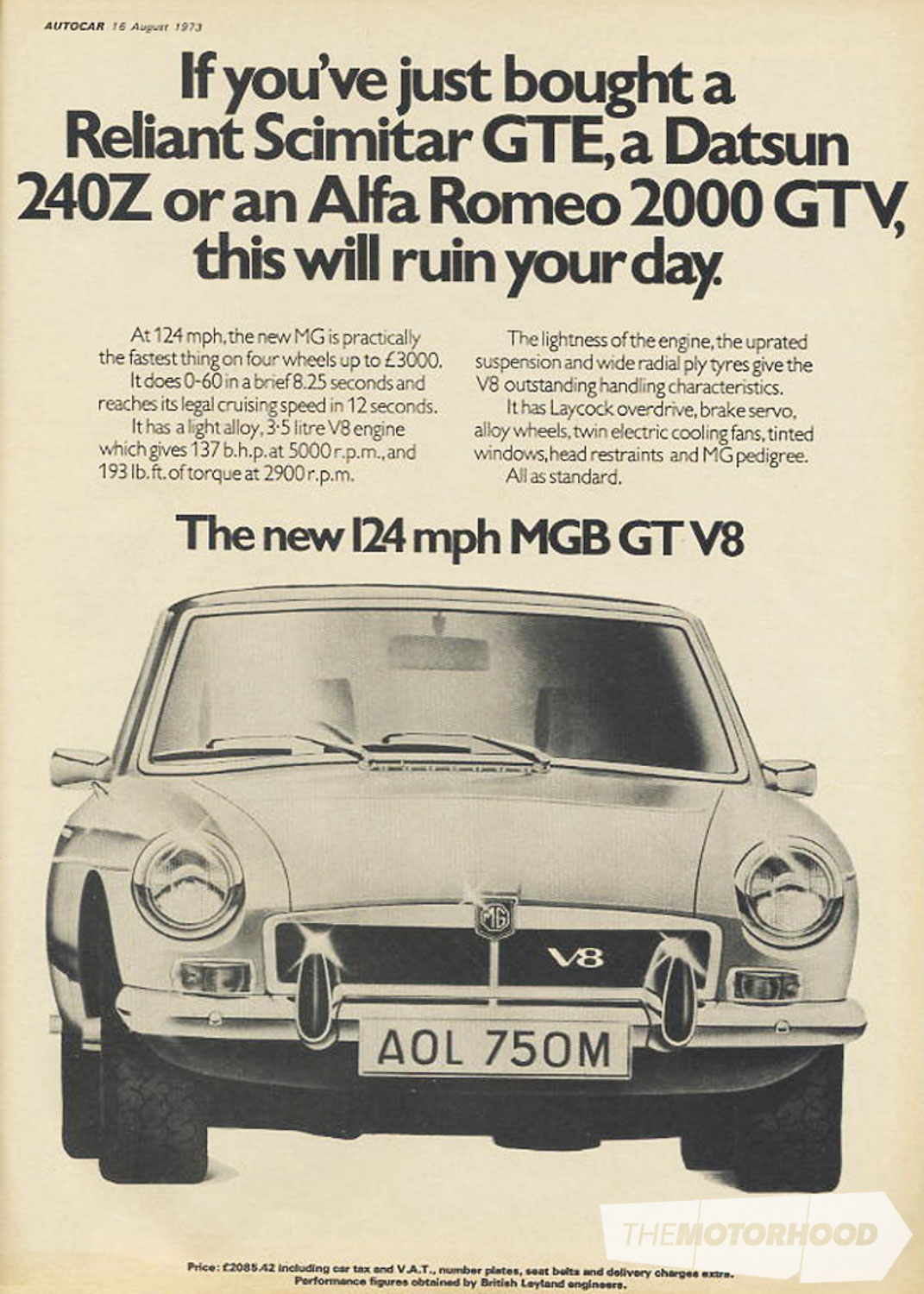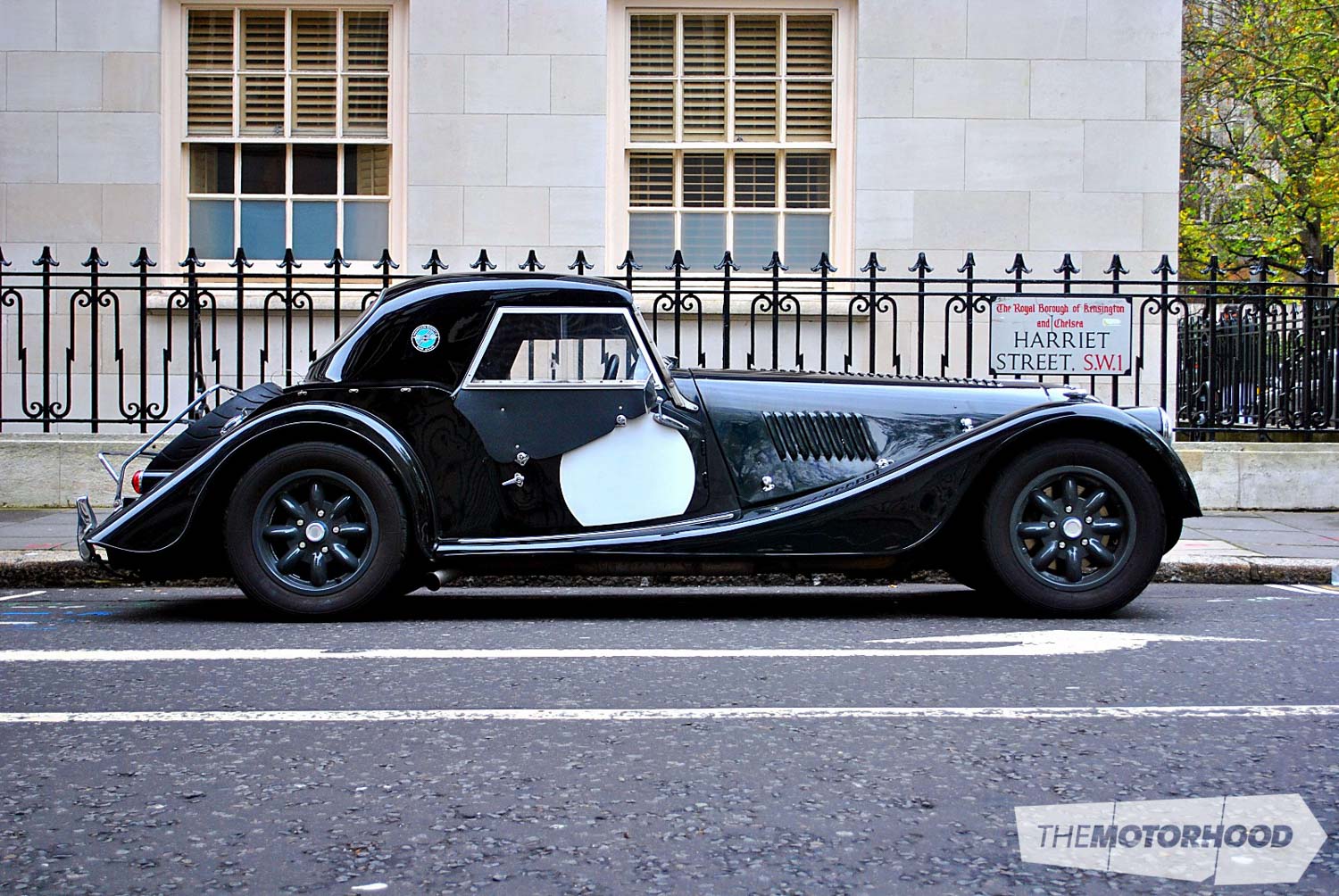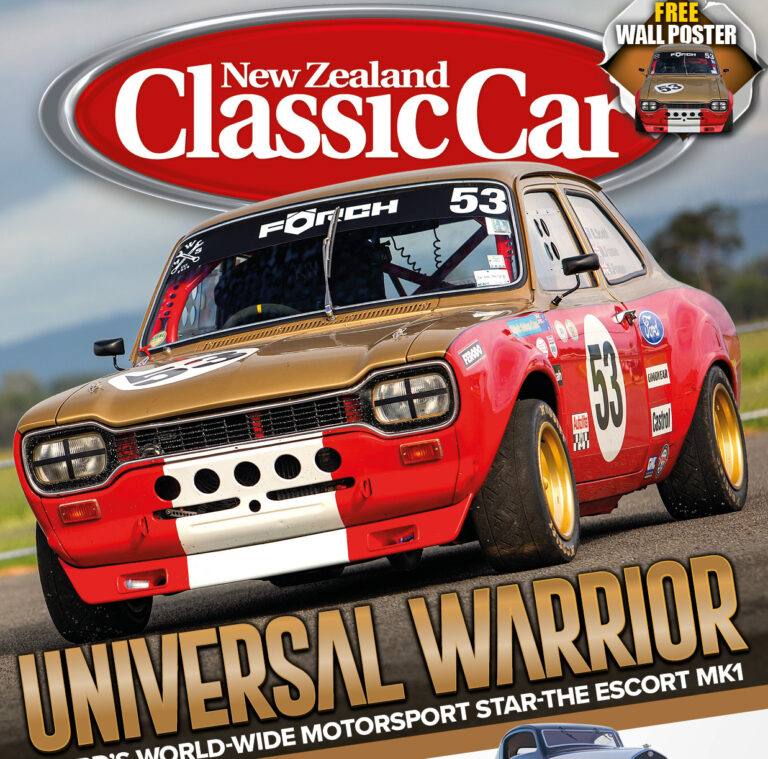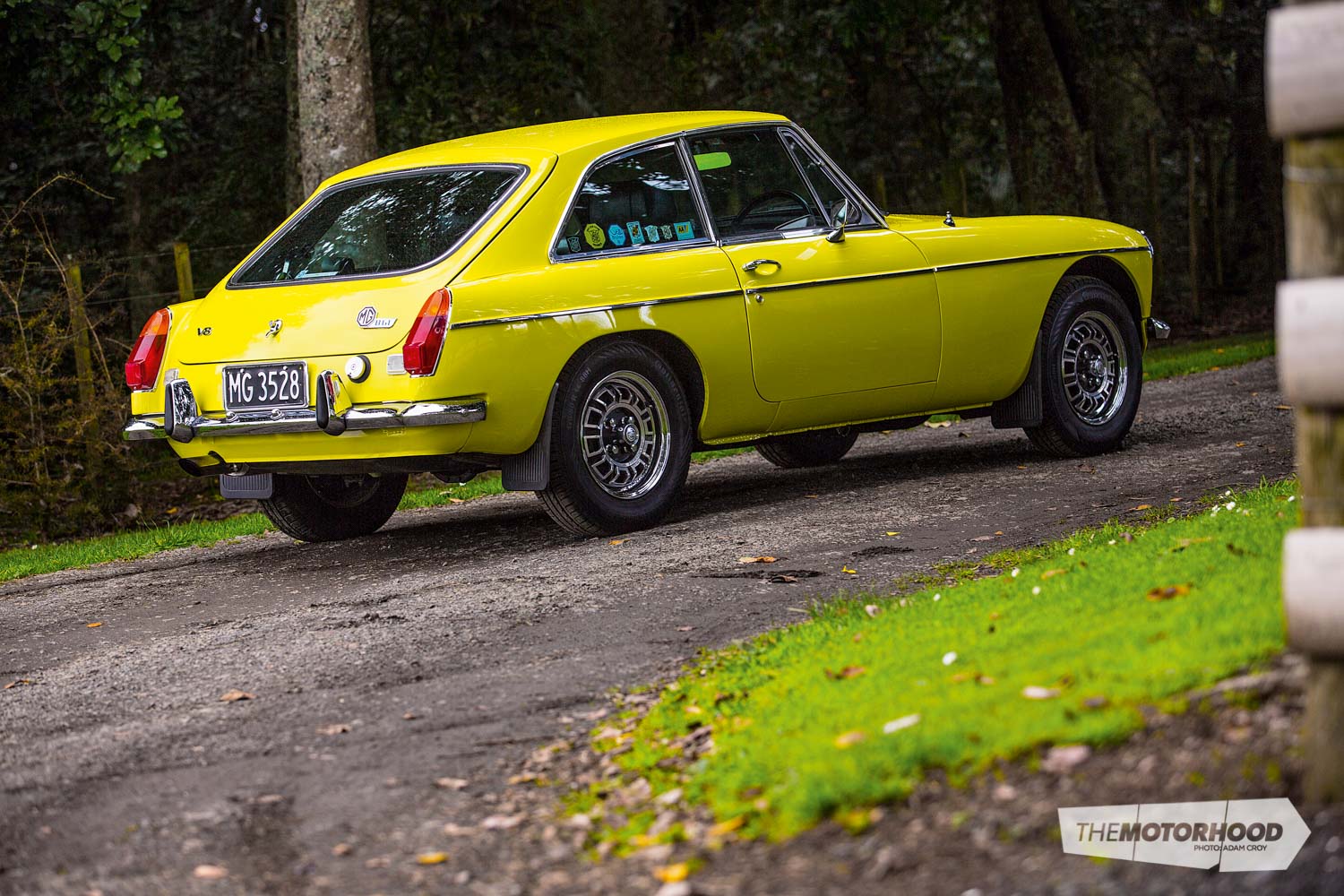
The addition of Rover’s 3.5-litre V8 was intended to give MG’s hardtop GT a fresh lease of life — but was it too little, too late?
MG’s first attempt at endowing the evergreen MGB with a bit more grunt came with the introduction of the MGC in 1967. It was developed to replace the outgoing Austin-Healey 3000, and perversely BMC eschewed the re-use of Healey’s straight six, instead opting for its new C-Series engine, a 2912cc six destined for the Austin 3.0-litre saloon. For the MGC the engine was fitted with twin SU carburettors, in which form it produced a healthy 106kW. Alas, this engine was no less than 94kg heavier than the standard MG four-banger. As well, the motor’s size dictated the adoption of specially-designed torsion-bar front suspension. Together, these two factors led to diminishment of the MG’s traditional handling traits. Initial press reaction was largely unfavourable — in later years, the car’s grand touring potential earned it far greater respect amongst enthusiasts. However, the MGC had a short life — 8999 examples being built until production ceased in 1969.
If the critics hadn’t exactly welcomed the MGC with open arms, as BMC segued into British Leyland, future plans for a high-performance MG took on a more urgent tone. Over in the US, MG’s largest market, Datsun’s new 240Z was trouncing the British sports car on the road and in the showroom. In de-toxed Federal form, the old four-cylinder B-Series engine was only good for a wimpy 61kW — barely enough to propel the MGB to a top speed of 145kph.
Alas, internal politics at British Leyland meant there were no fast or easy answers to the problem of combating decreasing sales or, indeed, developing a higher-performance sports car. As well, under Donald Stokes’ leadership, BL’s executive arm was distinctly pro Triumph. That meant any thoughts of an improved MGB were put on the back-burner as the company concentrated on the Triumph TR7 — the car it expected to take over from the MGB.
Of course, the MGB would soldier on for many more years, but future development was virtually non-existent — unless you count the introduction of those infamous rubber bumpers in 1974!
In the end, it was an ex-race driver who provided the impetus for a high-performance MGB.

Ken Costello’s MG V8
Although the MGC could hardly have been judged as a success, it did whet enthusiasts’ appetites for a more powerful MGB and, as a result of this demand, several UK tuning shops looked at filling it.
Interestingly, BL had already toyed with the idea of dropping a Rover V8 engine into an MG, but its engineering team, led by Charles Griffin, determined that such a conversion would be too expensive, as it would require widening the MG’s body by at least 89mm.
While BL considered such a conversion to be unfeasible, an ex race-car driver and auto engineer simply went ahead, and resolved the problems that BL seemed unable to solve.
Ken Costello got into both tuning and racing cars simultaneously when, in 1959, he was told that if he tuned a mate’s Mini he could go and race it on the track. He needed little encouragement, and soon build a reputation as a fast driver of hot Minis. Before long he was running a tuning division for a large Jaguar dealership, Cripps Brothers, continuing to do well on the track in a variety of cars. If you’ve ever watched John Frankenheimer’s excellent motor-racing movie, Grand Prix, you will have seen Costello doubling for actor Yves Montand at the wheel of a Brabham BT20.
It was after his involvement with that film, and once back in the UK, that Costello borrowed an MGB roadster, acquired a used Oldsmobile 3.5-litre (215ci) V8, and began work shoehorning the engine into the MG. By November 1969 the car was completed and a second example, this time a GT, was converted for Lady Cripps. With hugely improved levels of performance, the Costello MG V8 was judged to be so successful that Costello went into business for himself — opening up The V8 Conversion Company.
Illustrating its performance potential, an early road test of a Costello MG recorded a 0-60mph time of 7.8 seconds, as opposed to the standard MGB’s 12.1 seconds, while the V8’s top speed was 290kph as compared to 168kph. Another big plus from the V8 installation was the Rover’s all-alloy thin-wall construction meant it was no heavier than MG’s 1.8-litre engine — so, of course, the MGB’s excellent handling traits were unsullied by the conversion.
In May 1971, Costello received a letter from Charles Griffin at BL — he had read about the Costello MGB V8 and requested that the car be loaned to BL for a day or two. At that time Costello didn’t have a car to hand, but several weeks later, he drove one down to Longbridge. Griffin, who once determined that a V8 conversion was not feasible, thoroughly checked out the car and, later, Costello also took it to BL’s head office in London for Lord Stokes to take a test drive.
At that time, Stokes asked Costello what he would do if BL decided to produce an official V8 conversion of the MGB — Costello simply said that he’d keep on building them, as it’d take BL years to get its own car into production. Costello then supplied a fully-converted MGB GT to BL’s Special Tuning division at Abingdon in 1971 and, using that car as a base, MG’s engineers developed their own V8 conversion.

The official MGB V8
For the official, V8-powered edition of the MGB GT, a decision was made to go with the low-compression version of the Rover engine — in this form the V8’s output was 102kW (137bhp).
Starting with the V8, MG’s engineers modified the engine mounts, moved the MGB’s radiator further forward, and added twin electric fans to keep everything cool. An oil cooler was also part of the equation, mounted below the radiator duct. In order to squeeze the V8’s cast-iron exhaust manifolds into the MGB’s body, the inner wheel arches were recessed, while the firewall was also modified. The steering set-up came in for a few changes too, being lengthened in order to ensure the knuckle joint wasn’t too close to the exhaust manifold.
The car’s suspension bushes were treated to an upgrade, as were the brakes and water pump. To improve braking efficiency, a brake servo was fitted and the front calipers were enlarged, as were the rear brake cylinders.
As it straddled BL’s infamous rubber bumper, like the four-cylinder MGB the V8 ended up on tippy-toes with severely diminished handling. The MGB’s handling balance was restored in 1977, but by that time the MGB GT V8 was only a memory.
Development of the V8 was completed with the a pair of SU carburettors fitted atop the V8, each with its own specially-designed air cleaner — this necessitating a minor reshaping of the standard MGB’s bonnet. Finally, the V8 was dressed up with MG-badged rocker covers and, in this form, it was officially launched in August 1973.
With its very own V8-powered MGB on sale, Lord Stokes issued a directive that all BL dealers were prohibited from supplying new Rover V8 engines without taking an old unit in exchange — a step clearly intended to force Ken Costello out of the MG V8 business. Considering the help he’d provided towards MG, this was a rather ungrateful tactic. As a result, Costello sent a truck to Belgium and collected up old Buick and Oldsmobile engines — all of which were rebuilt using Rover parts and dropped into customers’ MGBs.
However, despite this resourcefulness, Costello couldn’t compete on price with the official MGB V8 and, inevitably, the demand for V8 conversions slowly dried up, and he sold the company in the late ’70s and set up a new business. Over the following years Costello developed a five-speed gearbox, and converted an MGB to run on fuel-injected V8 power several years before the similarly-equipped MG RV8 appeared. Today, Costello is still revered by MG enthusiasts as a major figure in the marque’s history.

Short life
If MG expected to sell plenty of its new, V8-powered sports cars it would be sadly mistaken, with two factors mitigating against big sales — although only one of these was out of MG’s control.
Today, we’re getting used to incessant increases in the price of petrol, but coincident with the MGB GT V8’s launch, the arrival of the very first global fuel crisis came as a complete shock. Suddenly, gas-guzzling vehicles were bad juju as the trend towards more economical cars began.
If that isn’t enough, BL was still pretty much content to put all its sports-car eggs into a single, Triumph-badged basket. In practical terms, this meant that MG simply didn’t have the resources to endow the new car with a visual style of its own. Indeed, apart from V8 badging, the only point of difference between the four-banger MGB and the new model was a set of exclusive wheels.
The Triumph clique at the top of BL also meant that the possibility of marketing the V8 in MG’s largest market, the US, was also virtually ignored. Seven federalized, LHD MGB GT V8s were built and shipped to the US but, depending upon which source you refer to, the new MG was never Type Certified due to the V8 encountering difficulties in meeting emission standards, or MG refused to crash test the car. However, it appears that the MGB GT V8 was certified for use by the US Department of Transportation!
More likely, it would seem, is the simple fact that BL didn’t want any competition for the Triumph TR7, which was on the verge of being launched. Ironically, no Rover V8-powered MGBs were ever officially sold in the land of the V8, the US, but oddly enough, except for a handful of RHD examples, Triumph’s wedge-shaped TR8 was almost exclusively a US-only model.
So, yet another opportunity lost by BL, and MG’s V8-powered GT only enjoyed a very short life.

Personal export
Our featured MGB GT V8 was originally purchased new via the British Leyland Personal Export Delivery Scheme and, indeed, the fully-stamped service book that is still with the car contains pre-printed Personal Export Delivery pages rather than pages more suited to standard home-market servicing.
The MG’s first owner picked up the car from University Motors in London on September 28, 1974, and following a pre-delivery check he immediately drove it to Germany, where he worked at that time. Subsequently, he had the MG shipped to New Zealand in early 1975, and it was registered here as HQ 9147 on April 16, 1975.
That first owner retained the car until December 1978, selling the MG to a business client in Wairoa — at that time it had 25,500 miles (41,038km) on the clock.
The car remained in Wairoa until it was discovered by an MG enthusiast. After hounding the owner for some time, he eventually purchased it in May 1983, becoming its third owner. A member of the MG Car Club and a resident of Marsden Point, the owner re-registered the car as MG 3528 when this particular sequence of number plate became available (it was before the advent of personalized plates) — 3528, of course, being the cubic capacity of the Rover V8 fitted to the car. During this period, it became well known in MG circles, winning numerous awards at club events.
Unfortunately, after being diagnosed with a terminal illness, this owner had to sell the car, and it was at this stage that Roger Flatz enters the picture.

Roger’s MG
Having owned a four cylinder, chrome-bumper MGB GT in his early 20s, Roger had always wanted to own one of the rarer V8 models, so in 1987, when he spotted the car at NZ Motorcorp in Hauraki Corner, on Auckland’s North Shore, he had to check it out. Apparently being offered on behalf of the owner, the MG was also advertised in the NZ Herald for $30,000. In 1987 that was a lot of money, more than Roger could afford at the time. Instead, he took a note of the MG’s registration number with the thought that, one day, he might be able to own the vehicle. Unsold, the MG went back to the owner who then sold it privately to a chap in Whangarei. At this time, the MG had travelled 56,100 miles (90,284km). This new owner drove the vehicle for 800km over the ensuing two years then simply parked it up, eventually placing it on blocks, and the MG sat in his garage for the next 24 years.
True to his original ambition to one day own this MG, in 1990 Roger managed to track down the car and talk to the owner — as a result, whenever he was in Whangarei, he made a point of checking it out.
Quite obviously Roger has plenty of patience and perseverance because in 2013, 26 years after he’d first spotted the car for sale at Hauraki Corner, he was finally able to acquire the MG. A deal was reached, with Roger having to sell a stunning Austin Mini Cooper S in order to buy the MG — Roger’s two daughters weren’t happy about that!
Roger requested that the car be brought up to WoF standards so he could drive it home, so it was duly recommissioned, and subsequently started for the first time in 24 years prior to being driven back to Auckland by Roger.
At a time when very few unrestored MGB GT V8s remain, this car was still in outstanding original condition despite having been immobile for over two decades — although it took several minutes to unstick the old tyres from the rims when Roger had new tyres fitted.
Still in its original colour of Citron (a hue shared with 256 other examples), the MG’s odometer now reads 57,000 miles (91,733km), and its original owner’s manual and service coupon booklet, along with the original ownership papers, remain with the car. The only non-original part on it is the V8 badge on the glovebox lid — and that will be replaced once Roger sources a replacement lid.
Today, the MGB GT V8 is seen by many as being the ultimate classic MGB and, it also being the the rarest derivative, examples are now highly prized by MG and sports car enthusiasts. As for Roger, ownership of this particular V8-powered MG is the fulfilment of a long-held dream.

1974 MGB GT V8
The featured car is number 1646 of 2591 V8 models produced. At last count in 2011, the V8 Register of the MG Car Club in the UK believed there to be 19 V8 models in New Zealand.
- Engine: All-alloy V8
- Capacity: 3528cc
- Bore/stroke: 88.9×71.1mm
- Valves: OHV pushrod
- Comp ratio: 8.25:1
- Max power: 102kW at 5000rpm
- Max torque: 262Nm @ 2900rpm
- Fuel system: Twin SU H1F6
- Transmission: Four-speed manual/OD
- Suspension F/R: Independent by wishbones, coil springs, anti-roll bar and lever-type damper, live axle, semi-elliptic leaf springs and lever-type dampers
- Steering: Rack and pinion
- Brakes: Disc/drum
- Wheels: 14-inch x 5J, alloy centres, chromed rims
- Tyres: 175HR x 14
Dimensions:
- Overall length: 3378mm
- Width: 1524mm
- Height: 1257mm
- Wheelbase: 2324mm
- Kerb weight: 1077kg
Performance:
- Max speed: 201kph
- 0–100kph: 8.3 seconds
- Standing ¼ mile: 15.8 seconds
Production:
- April 1973—July 1976: 2591 (1856 chrome bumper / 735 rubber bumper)
- Price (1973): £2309
Ken Costello’s V8-powered MGs
Earlier Costello conversions featured the V8 to P6 specification complete with twin SU carburettors underneath a bulging fibreglass bonnet. With the adoption of lower-profile inlet manifolds, later cars could be fitted with a standard MG bonnet. With the bonnet bulge gone, these cars could only be identified from a standard MG via a rear panel-mounted ‘V8 Costello’ badge and a distinctive, black ‘egg box’ front grille. According to Ken Costello, his company converted around 225 MGBs — 25 per cent being roadsters. One LHD auto car was converted for a Canadian owner and, additionally, one MGC was also upgraded to V8 power.
Powered by Rover: Triumph TR8
Produced in small numbers from 1978 to 1981, Triumph’s controversially-styled — by Harris Mann, reputedly on the back of a cigarette packet — wedge-shaped TR7 eventually led to the Rover V8-powered TR8. It was built in small numbers and never officially sold in the UK. Almost all examples were sold in the US, where many competed in SCCA racing. TR8 production figures vary from source to source, with numbers being quoted from 2722 to 2815. Following the introduction of the TR7 convertible in 1979, all subsequent TR8s were open-top cars.
Powered by Rover: Morgan Plus 8
By dropping a Rover V8 into a wide-track version of its standard roadster, Morgan produced one of the truly great British sports cars — with stonking performance allied to seat-of-the-pants handling. Ongoing development saw the original Moss gearbox dropped in 1972, and the adoption of a five-speed gearbox in 1976. Engine capacity was increased to 3.9 litres in 1990, while a 4.6-litre option was made available in 1996. In 2012, Morgan switched to BMW’s 4.7-litre V8.
Powered by Rover: Marcos Mantula, Mantara & Mantaray
Utilizing a slightly revised version of the classic Marcos body, as originally penned by Dennis Adam, the Mantula of 1983 was part of the resurrection of the marque. Later examples received the 3.9-litre EFI version of Rover’s V8. Leaving behind their kit-car origins, by 1992 all Marcos cars were only available fully built up — with the Mantara employing either 3.9 or 4.6-litre Rover V8 power. By 1997, the Mantara had evolved into the Mantaray, also Rover V8-powered. Marcos made a return to the race track with the LM400 (3.9-litre Rover) and LM500 (5.0-litre Rover). The final Rover-powered Marcos was the TS500 of 2003.
Powered by Rover: TVR 350i
Originally introduced in 1983, the 350i featured the Rover V8 mounted into an existing TVR Tasmin. The large-engined 390SE appeared in 1984, inspiring TVR to further develop the V8 for subsequent models such as the 420 and 450 SEAC. TVR’s work on the Rover V8 eventually lead it to come up with its own distinctive derivative — the TVR Power Speed Eight.

